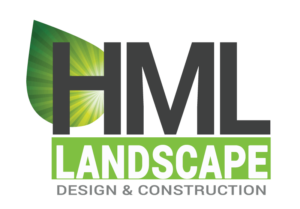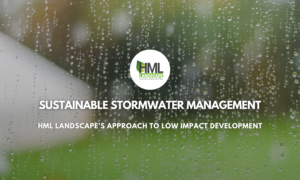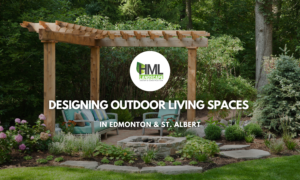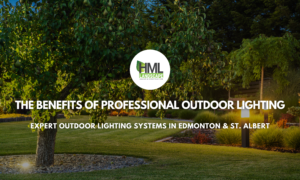
As urban development continues to expand, effective stormwater management has become more critical than ever. To preserve both environmental balance and infrastructure integrity, the City of Edmonton has introduced new drainage system requirements. These systems are designed to allow rainwater to naturally infiltrate the ground before it enters the municipal sewer system. This shift aligns with the principles of Low Impact Development (LID), which promotes sustainable, environmentally-conscious growth in urban areas.
What Is Low Impact Development (LID)?
Low Impact Development (LID) is an approach to land development that focuses on mimicking natural hydrological processes to manage stormwater. Rather than relying on extensive infrastructure to divert water away, LID emphasizes on-site infiltration, filtration, storage, and evaporation of water. This strategy not only reduces runoff but also promotes groundwater recharge, ensuring a more sustainable approach to managing stormwater. Unlike traditional methods, which often require costly and large-scale infrastructure, LID solutions work with the natural landscape to manage water efficiently.
Key Components of LID
- Rain Gardens
Rain gardens are shallow, vegetated basins that collect and absorb runoff from impervious surfaces like driveways and rooftops. These areas are designed to filter pollutants from stormwater, allowing it to soak into the ground rather than flooding into the storm drain system. - Rainwater Harvesting
Rainwater harvesting systems capture and store rainwater for non-potable uses like irrigation. This reduces dependence on municipal water systems and helps conserve valuable water resources. - Permeable Pavements
Permeable paving materials allow water to pass through the surface, reducing surface runoff and encouraging water infiltration into the soil beneath. These materials help to mitigate urban heat islands while supporting sustainable water management. - Bioswales
Bioswales are landscape features designed to direct and filter stormwater while removing debris and pollutants. These swales provide a more natural way of managing water flow in urban settings.
The Role of Native Plants in LID
One of the key advantages of incorporating native plants in LID systems is their adaptability to local climate and soil conditions. Native plants require minimal maintenance, reducing the need for irrigation and chemical treatments. Their deep root systems improve soil structure, enhancing water infiltration rates and reducing the likelihood of erosion. Additionally, native plants support local biodiversity by providing habitat for wildlife, promoting a healthier ecosystem overall.
The Importance of Clean-Outs in LID Systems
To ensure that LID features continue to function properly, it’s essential to include clean-outs in the design. These access points allow for easy inspection and maintenance, helping to prevent blockages that can interfere with water flow and infiltration. Regular clean-outs keep the system operating at peak efficiency, prolonging its lifespan and effectiveness.
The Benefits of Low Impact Development
Implementing LID strategies offers numerous benefits for urban landscapes and communities:
- Environmental Protection: By filtering stormwater through vegetation and soil, LID helps reduce pollution and protect natural water sources.
- Flood Mitigation: LID practices decrease the speed and volume of stormwater runoff, reducing the risk of localized flooding.
- Groundwater Recharge: LID systems enhance the replenishment of underground aquifers, supporting long-term water availability.
- Cost Efficiency: LID solutions often require less infrastructure investment than traditional stormwater management systems, leading to potential savings in construction and maintenance.
- Aesthetic and Recreational Value: LID systems, such as rain gardens and bioswales, add beauty and recreational value to urban landscapes, improving the quality of life for residents.
How HML Landscape Can Help
At HML Landscape, we specialize in designing and implementing Low Impact Development (LID) solutions tailored to the specific needs of Edmonton, St. Albert, and Northern Alberta. Our services include:
- Customized LID Design: We develop site-specific plans that incorporate rain gardens, permeable pavements, and other LID features, ensuring your landscape is both sustainable and functional.
- Native Plant Landscaping: We select and plant native species that not only enhance the aesthetic appeal of your landscape but also improve the performance of your stormwater management system.
- Installation and Maintenance: Our team ensures that LID systems are installed properly and continue to function as intended, including the maintenance of clean-outs to keep the system running smoothly.
By choosing HML Landscape, you can help contribute to a more sustainable urban future while complying with the City of Edmonton’s new drainage requirements. For more information or to schedule a consultation, call us at (780) 460-2088 or email info@hmlconstruction.com. Let’s work together to create environmentally responsible and resilient landscapes!







